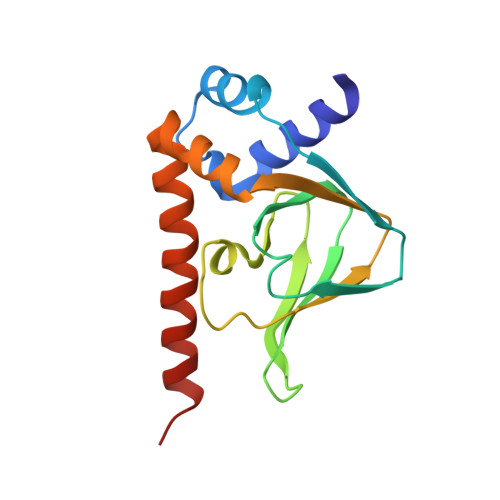Nitrosative stress sensing in Porphyromonas gingivalis: structure of and heme binding by the transcriptional regulator HcpR.
Belvin, B.R., Musayev, F.N., Burgner, J., Scarsdale, J.N., Escalante, C.R., Lewis, J.P.(2019) Acta Crystallogr D Struct Biol 75: 437-450
- PubMed: 30988260
- DOI: https://doi.org/10.1107/S205979831900264X
- Primary Citation of Related Structures:
5V30, 6NP6 - PubMed Abstract:
Although the HcpR regulator plays a vital step in initiation of the nitrosative stress response in many Gram-negative anaerobic bacteria, the molecular mechanisms that it uses to mediate gas sensing are not well understood. Here, a 2.6 Å resolution crystal structure of the N-terminal sensing domain of the anaerobic periodontopathogen Porphyromonas gingivalis HcpR is presented. The protein has classical features of the regulators belonging to the FNR-CRP family and contains a hydrophobic pocket in its N-terminal sensing domain. It is shown that heme bound to HcpR exhibits heme iron as a hexacoordinate system in the absence of nitric oxide (NO) and that upon nitrosylation it transitions to a pentacoordinate system. Finally, small-angle X-ray scattering experiments on full-length HcpR reveal that the C-terminal DNA-binding domain of HcpR has a high degree of interdomain flexibility.
Organizational Affiliation:
Department of Biochemistry and Molecular Biology, School of Medicine, Virginia Commonwealth University, Richmond, VA 23298, USA.
















